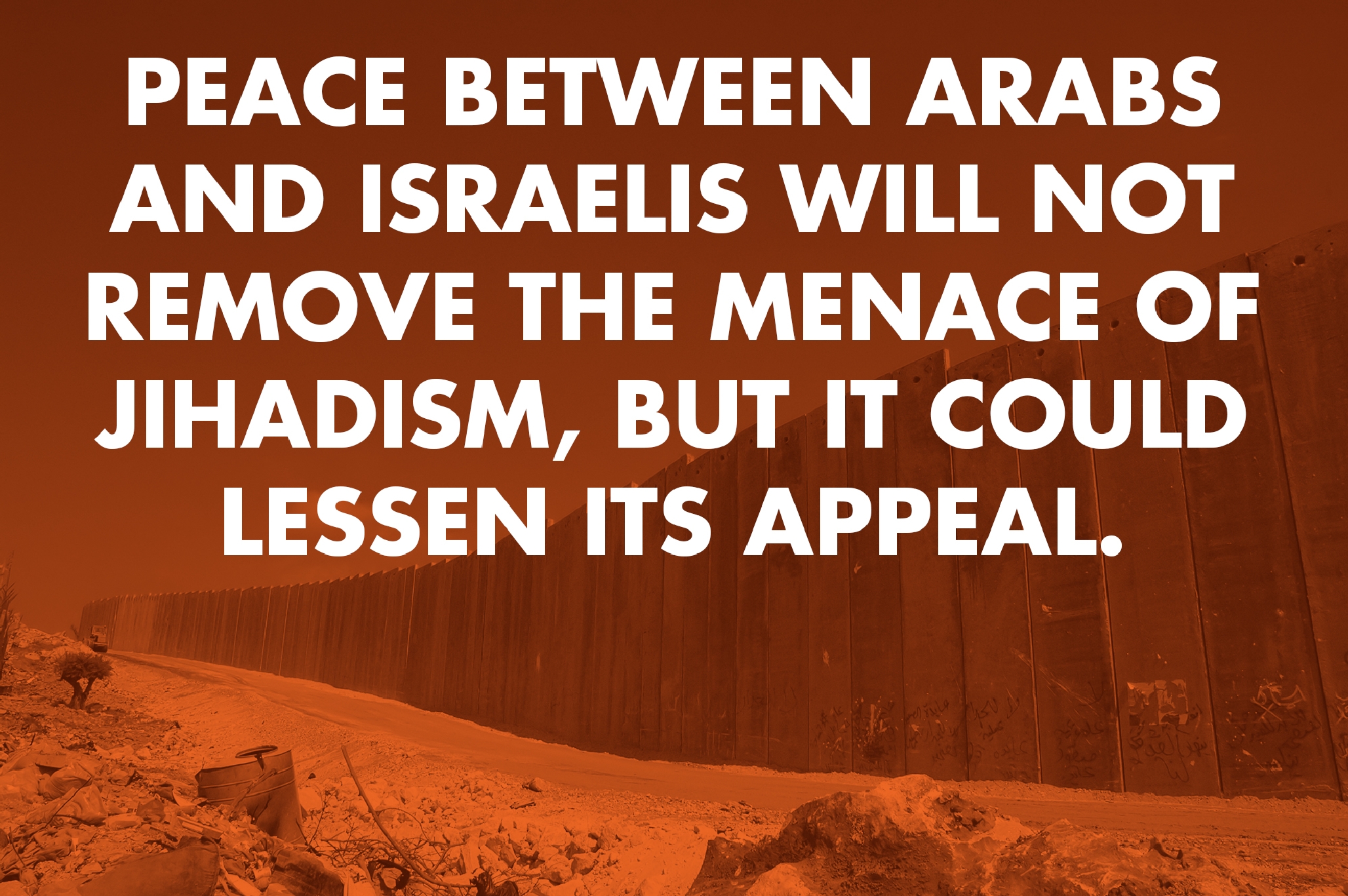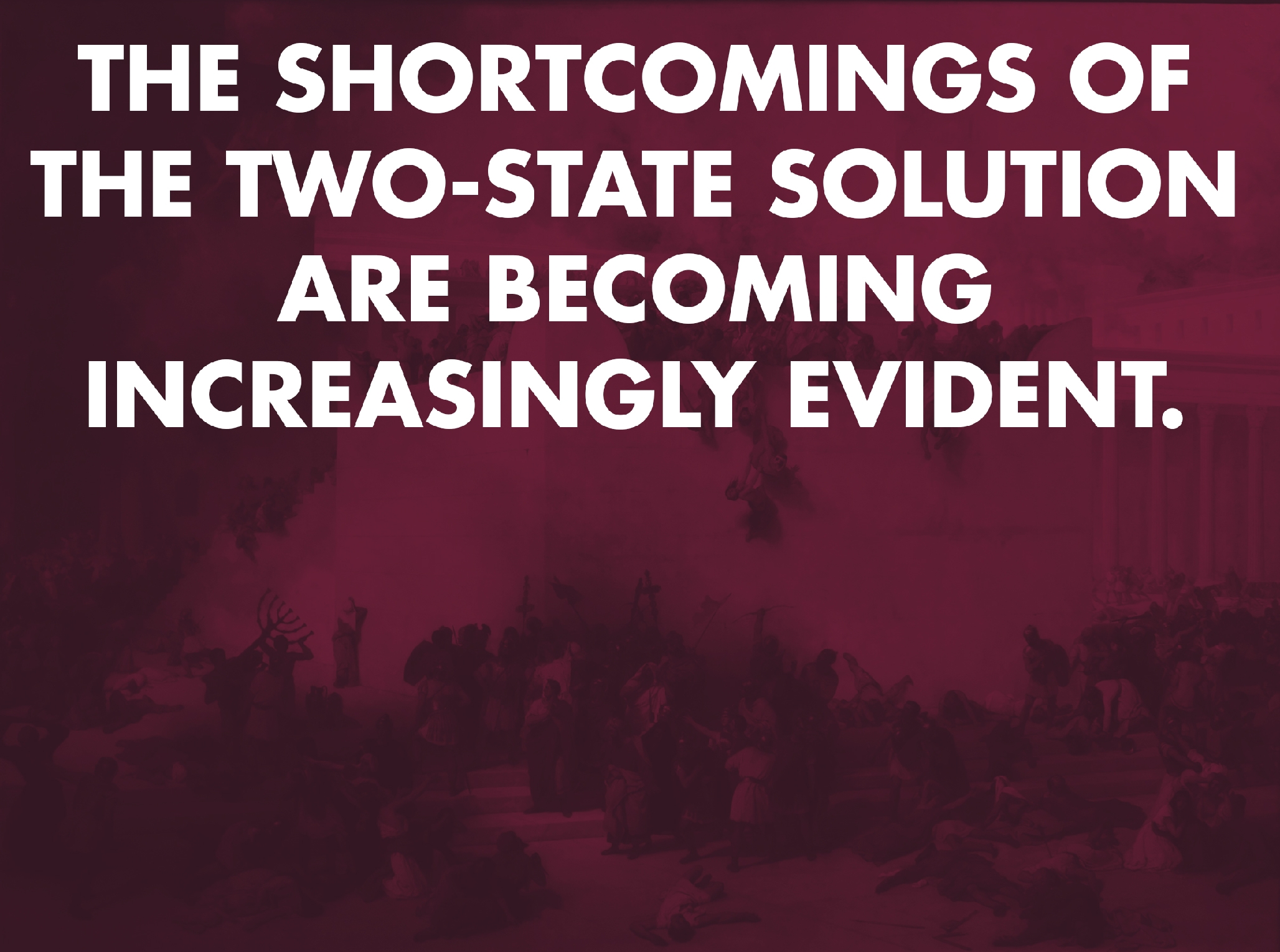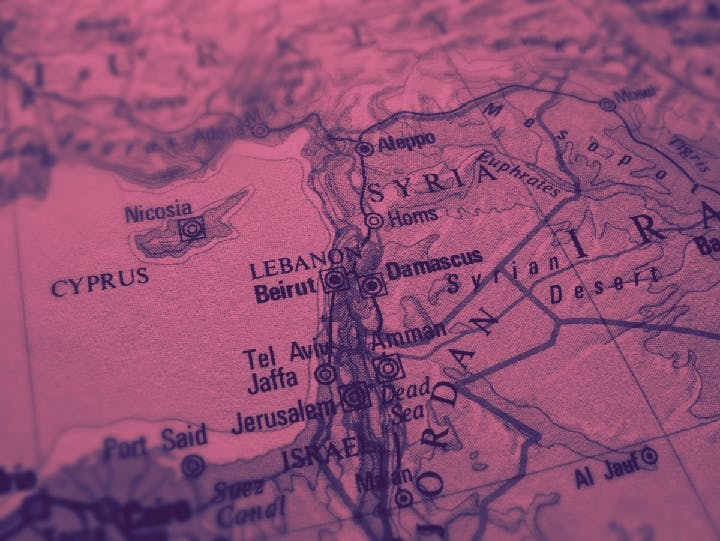Winter 2016
One way to resolve the Israeli-Arab conflict: a three-state confederation
– Sanford Lakoff
The shortcomings of the two-state solution are becoming increasingly evident. A three-state confederation could offer a lasting resolution.
It will take some good old American “never-say-die” spirit, in view of all the past failures, but the next president would be well advised to consider fresh approaches to mediating a resolution of the Arab-Israeli conflict. One that so far has not been seriously considered but has potential appeal is to enlarge the long-proposed two-state solution to encompass a loose confederation of Israel, Palestine, and Jordan.
_-_ISR_-_UNOCHA.svg.png)
The record is certainly discouraging, but the need for constructive mediation remains critical. In May 1948, President Harry S. Truman made the historic decision to grant de facto recognition to the newly declared state of Israel, following the vote of the United Nations General Assembly favoring partition of Palestine into a Jewish and an Arab state. Since then, Truman’s successors have been stymied in their efforts to help resolve the protracted and costly conflict that has ensued. Bill Clinton came closest when, in December 2000, at the very end of his second term, he built on the 1993 Oslo Accords to propose a two-state solution involving land swaps. The Israeli cabinet accepted Clinton’s plan, but Palestine Liberation Organization (PLO) leader Yasser Arafat dithered. In 2008, Mahmoud Abbas, Arafat’s successor, rejected essentially the same proposal when it was offered by Israeli prime minister Ehud Olmert. In 2014, Barack Obama brought the parties to the negotiating table, but to no avail, and in November 2015 his administration suggested that it would forego further efforts during the remainder of Obama’s term.
The next president — however chastened he or she will be by this record of frustration — should try yet again, if only because the persistence of this conflict serves as a recruitment tool for jihadists. They are enlisting growing numbers of young Muslims to attack American targets by painting Americans as modern-day Crusaders out to destroy Islam and as the chief ally of Israel, whose clashes with Palestinians make for constant inflammatory propaganda. Peace between Arabs and Israelis will not remove the menace of jihadism, but it could lessen its appeal. If the next effort to circumvent the impasse is to have a better chance of succeeding, however, modifications to the two-state solution, which so far has proved unworkable, must now be carefully considered.

One initiative, which is preferred by many Palestinians and could come to pass by default, would be a one-state solution encompassing Israel, the West Bank, and Gaza. This state would have to grant Palestinians equal political rights; otherwise, it would undermine Israel’s status as the region’s longest-standing democracy and would not satisfy Palestinians. But adding the 4.75 million Arabs of East Jerusalem, the West Bank, and Gaza to the 1.47 million who are already on the country’s voting rolls would risk turning the country into a state with an Arab majority, hardly an acceptable prospect for Jews who have struggled for so long to recreate the Jewish homeland. That “demographic threat” is precisely why, in 2005, former Likud leader and prime minister Ariel Sharon — earlier dubbed “the bulldozer” for his enthusiastic support of settlement-building in the occupied territories — ordered the unilateral evacuation of Jews living in Gaza and agreed to the construction of a security barrier separating Israel from most of the West Bank.
Another, more promising idea, sometimes proposed but not yet seriously investigated, would be to broaden the two-state solution to include Jordan — in which upwards of four million Palestinians now reside. This arrangement would encompass contiguous territories inhabited by 90 percent of Palestinians. In a three-state confederation of Israel, Palestine, and Jordan, borders would be recognized but permeable. Palestinians would have the dignity and self-determination that they have been struggling to achieve in a framework that could replace hatred and mistrust with an opportunity for cooperation and friendship. Israel would not be forced back behind an insecure hermetic boundary 10 miles wide at its narrowest. Moreover, confederation would not be a complete novelty; it would reunite the peoples who inhabit the area that the British first designated as the unified territory of Palestine following the collapse of the Ottoman Empire in 1918.

In a three-state confederation of Israel, Palestine, and Jordan, borders would be recognized but permeable.
At first blush, this proposal may seem naïve and impractical, if only because it would make the Jordanian regime a third party to what is already a complicated two-dimensional puzzle — and at that, a third party that formally disengaged from the Palestinian struggle in 1988, after the outbreak of the Palestinian intifada persuaded King Hussein that the Palestinian people “had elected the PLO.” There are other well-recognized obstacles to any sort of pacification. Perhaps the greatest is that, as the Israeli analyst Asher Susser puts it in his excellent book, Israel, Jordan, and Palestine: the Two-State Imperative, Palestinians are preoccupied with “the 1948 file” (the rights of Palestinian refugees and resident Palestinians in Israel), whereas Israelis focus on the “1967 file” (the issues of Israel’s borders and the final status of the city of Jerusalem). This disconnect over key issues has hampered negotiation efforts for decades. In addition, the experience of almost a century of bloody conflict, lately renewed by lone-wolf Palestinian attacks and lethal Israeli responses, has left a residue of bitterness over perceived injustices and loss of life that makes the memory of the past an implacable enemy of hope for the future. Nor are there any exact precedents for a loose confederation like this. Switzerland and Belgium are confederal states but each has a unitary national government and is recognized internationally as a single sovereign state. Many other countries have federal systems that devolve significant powers to constituent states, provinces, and regions, but all have national governments with supreme authority.
Already, there are seeds of mutual understanding that could be cultivated.
Nevertheless, there are seeds of mutual understanding that could be cultivated. Some Palestinians — especially among those who live as citizens of Israel and have lately elected the third-largest bloc in the Knesset — have come to appreciate that Jews have a claim to their ancient homeland and will make any sacrifice to maintain it. And even deeply committed Zionists, like the Israeli writer Ari Shavit, acknowledge that displaced Palestinian Arabs have suffered injustice and support efforts at reconciliation.
New thinking is needed because the shortcomings of the two-state solution are becoming increasingly evident. The territory comprising Israel, the West Bank, and Gaza is about the size of a small American state, and dividing it between one dynamic nation and another aspiring to become one will not be easy for either of them. Many Israelis fear that Hamas and other extremists unwilling to recognize Israel’s right to exist will take over the government of Palestine or sabotage an agreement by using the high ground adjacent to the heartland of Israel as another platform for missile attacks, as they have from Gaza. Will a sovereign Palestinian state have an army that could obtain the most lethal modern weapons from hostile states like Iran, just as Hezbollah has done on Israel’s northern border? Will it be free to enter a military alliance threatening to Israel? Will there be room enough to resettle the over five million Palestinians who now reside in Jordan, Lebanon, and Syria, or will they be expected to accept a settlement of the conflict that leaves them in the diaspora? Will the constricted airspace accommodate another major international airport? Will Israel be able and willing to uproot all 350,000 Jewish settlers on the West Bank?
The shortcomings of the two-state solution are becoming increasingly evident.
To address these serious shortcomings, it is worth considering a broadening of the two-state solution into one that would unify three adjoining states. Israel, Palestine, and Jordan would be associated in a permanent alliance but remain independently sovereign. The unitary authority would be a technocratic commission like the Commission of the European Union, whose job it would be to set common standards and oversee projects like water distribution and the electric grid. To accommodate the majority of Jewish settlers, the boundary of Palestine would be drawn to give about 5 percent of the West Bank to Israel, with equivalent swaps of Israeli land to Palestine, as envisioned in the Clinton parameters. This would put two-thirds of the settlers within Israel’s borders. The rest would be offered incentives to move to Israeli territory or given the option of remaining in place as citizens of Israel and residents of Palestine, just as Palestinians in Nazareth and the Galilee could become citizens of Palestine while remaining residents of Israel. (These days, such arrangements are common for Europeans and even for Americans who choose to live and work in Mexico and Canada.) Like Costa Rica, the new state would have a police force but not an army. It would become a member state of the United Nations and not only an observer, as Palestine is today.
Palestinians living in Israel and Jordan would not need to relocate to acquire Palestinian citizenship. They could be residents of any state in the confederation, but citizens of whichever one they chose to adhere to. They would pay part of their taxes to the country of their national identity and part to the state of their residence. They would vote in the national elections of their choice but also have a voice in local affairs as residents of each of the three states. Palestinians in refugee camps in Syria and Lebanon and in temporary shelters in Jordan could be accommodated in the West Bank or Jordan. Palestine would have a capital in East Jerusalem and a share in the government of the municipality, which is already a de facto binational jumble. And importantly, neither Jews nor Arabs would have to feel that they were giving up their claims to precious soil that belonged to their forebears — a crucial psychological consideration — since the entire land of the confederation would belong to them all.
At the outset, some border controls and checkpoints will still be needed to preserve security, but over time the security personnel of the three countries would cease to be potential antagonists and would work together, as they already do to some extent. Gaza, however, would have to be omitted from the confederation until its residents free themselves from Hamas’s control and show that they are ready to live in peace with Israel.
Neither Jews nor Arabs would have to feel that they were giving up their claims to precious soil that belonged to their forebears.
For Jordan, confederation holds the promise of ending its economic status as a dependent of the Gulf states and of overcoming the serious internal tensions between its Palestinian majority and its Bedouins. If even a significant fraction of Jordanian Palestinians opted for Palestinian citizenship, the fear that Jordan might someday become part or all of Palestine would be removed, and the Hashemite monarchy, which proudly proclaims its protectorate over Al-Aqsa Mosque and the Dome of the Rock, would have less fear for its future. The deal would have to be underwritten by a major multibillion-dollar international fund designed both to compensate displaced Palestinian Arabs and Jews forced to leave Arab countries and to induce Jordanian acceptance. In time, the economic benefits to all the parties from an enlarged market, industrial cooperation, and expanded high-tech education would set an enviable example for the rest of the region. Shimon Peres’s vision of a “new Middle East” would actually begin to emerge.
The United States, as an ally of both Israel and Jordan and a supporter of Palestinian statehood, could play a critical role in bringing the parties together and initiating the international aid fund that would come into play once it is established. Truman said that he had supported partition and had given de facto recognition to Israel not out of political expediency but above all because he felt it was the right thing to do. He surely would also have sympathized with the yearning of Palestinians for self-determination.
A loose tristate confederation may now be the best way of achieving a solution that meets more than the minimal needs of all parties. It could also set a benign example for the rest of this turbulent region. The recently announced agreements for a $300 million water desalination project among Israel, Jordan, and the Palestinian Authority, and for Jordan’s purchase of natural gas from Israel’s recently discovered offshore fields, could serve as a basis for further integration, just as the European Coal and Steel Community of the late 1940s and early 1950s paved the way to the European Union. Israel and Jordan have also begun to cooperate closely in security matters. Since 2014, for instance, Israel has given Jordan 16 U.S.-made Cobra helicopters for use in border defense against the Islamic State. Jordanian and Israeli pilots took part in joint U.S.-led military training exercises and Jordanian jets were refueled by an Israeli tanker over the Atlantic.
Would there still be obstacles to overcome? Of course. But as Theodor Herzl, the founder of the political Zionist movement once said prophetically, “If you will it, it is no dream.” When Truman was congratulated by Israelis for his role in their achievement of statehood, he exulted, “I am Cyrus! I am Cyrus!” — seeing himself as a reincarnation of the ancient Persian ruler who had restored the Jews to their homeland in the sixth century BCE before they were ultimately expelled from it by the Romans. By brokering a tristate confederation, the next American president could claim even more of an historic achievement, this time as a benefactor of both Jews and Arabs and of our own and the world’s peace and security.
* * *
Sanford Lakoff is the Edward A. Dickson professor emeritus of political science at the University of California, San Diego. From 1973–1974, he was a fellow at the Wilson Center.
Cover photo courtesy of Shutterstock
Update - January 29, 2016: an earlier version of this piece used outdated statistics for the number of Palestinians in the West Bank and in Israel. According to a news release from the Palestinian Central Bureau of Statistics, there are now 4.75 million Palestinians in the West Bank, East Jerusalem, and Gaza, and 1.47 million Arabs who are citizens of Israel.
